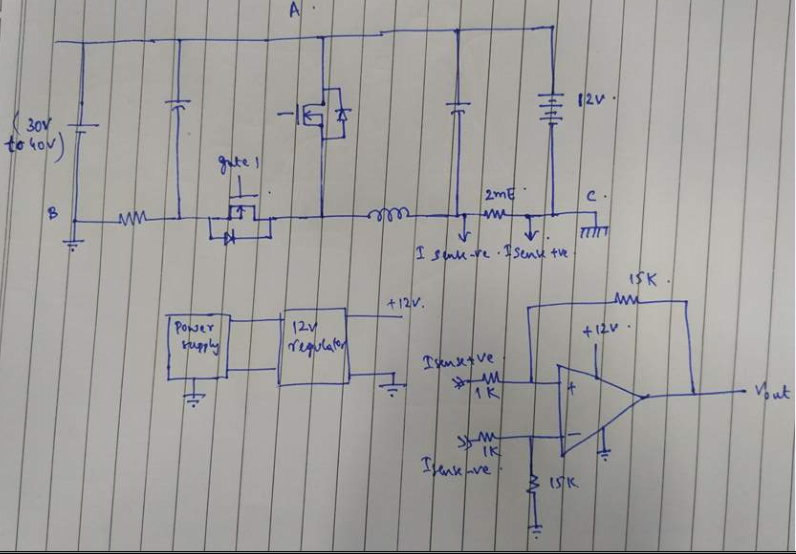Other Parts Discussed in Thread: INA168
Hi,
I am using TLV272 in Differential opamp configuration. as shown below
Point B is Input ground
Point A Voltage varies between (30-40)V W.R.T point B
AB is input
AC is output.
My point C is at ( 30 - 12) V i.e at 18V w.r.t point B (Point B is same as the opamp ground)
so the voltage at Isense+ve and Isense-ve are at 28V w.r.t ground.
Current through the output shunt is 40A.
So the voltage drop across the shunt is 0.08V (40*0.002)
Gain of the opamp is 15
from the data sheet:
Common mode voltage range is 11.65V (VDD - 1.35V)
Now that the voltages at both the +VE and -VE pins of the opamp are way more than this, the opamp output Vout should be very much off.
Question1: Is it allowed for the voltage at the input pins of the opmap to be more than VDD.
Question 2::When my input voltage is 17 my output Vout is still ok( Is it because my common mode voltage is 5V(Which is allowed upto 11.65V)
Question 3: What is the safe possible operating common mode voltage
Question 4: Any alternate part that has a common mode voltage of upto 60V (Since I am measuring DC values here I can compromise with very low bandwidths also)
Thanks,
Rajesh


